Approach
Approach
When resources like time, money, and effort are invested into delivering an energy access project to a remote community, it is hoped that the project last for a significant amount of time, ideally for a generation or more. Ensuring sustainability in energy access projects presents unique challenges. It requires identifying potential points of failure and addressing them proactively. This approach is embodied in the concept of the Circle of Sustainability, that Gram Oorja has been trying to ingrain in all our project over the years.
Circle Of Sustainability
Any lapse in one of these areas could hinder the project’s longevity. A recent survey of microgrids in Jharkhand revealed that out of 94 microgrids set up in the state over the past 7-8 years, 92 are still operational. Similarly, this success demonstrates that human development and sustainability challenges are best addressed through integrated, community-led solutions and underscores the importance of the circle of sustainability.
Gram Oorja’s projects, including micro-grids, water pumping for domestic and irrigation purposes, biogas systems for communities, and institutional setups, exemplify this belief. Unlike conventional technology-centric energy projects, our model focuses on community-centric solutions. This strategy not only meets immediate energy needs but also fosters long-term development, local employment, and community ownership.
For areas with participative governance, the Village Energy Committee model often proves most effective. In more mainstream communities, an entrepreneurial model may be more suitable.
Man’s need for energy is continuously growing. At the same time, energy is all around us in abundant quantities. All that is required is the conversion of natural energy into forms that man can use. This requires an instrument. Inspired by Lord Krishna’s exhortation to Arjun in the Bhagwad Gita, we at Gram Oorja strive to be the instrument of this transformation:
“Be only an instrument”
निमित्तमात्रं भव.
Energy is an enabler, and we are committed to harnessing it for the betterment of rural communities.
We At Gram Oorja
- Identify sites based on partner requirements and community needs.
- Conduct comprehensive surveys and community engagement exercises to design systems based on needs and aspirations.
- Help attract appropriate financial support
- Install systems using high quality products and work with social organisations to establish governance structures for the systems
- Support in maintenance of installed systems.
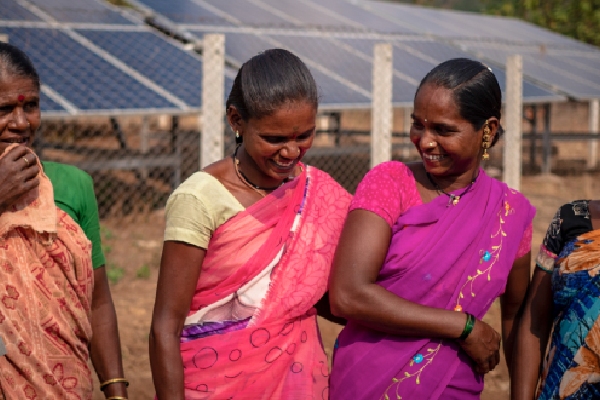
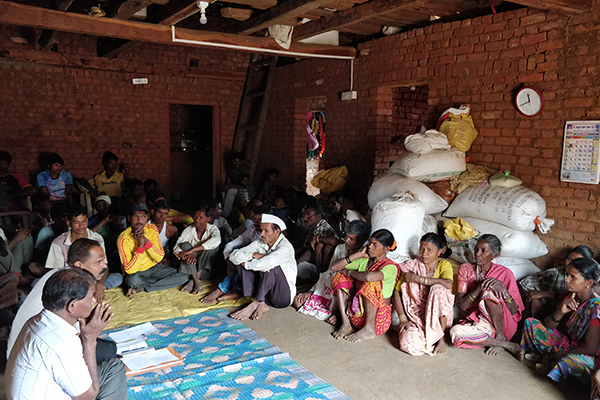
Community Interaction
Before starting any project, we engage deeply with the community to understand their socio-economic conditions and immediate energy needs. This helps us assess their readiness to adopt new technologies and establish trust. We involve the community in the installation process to foster accountability and ownership. A local village committee is formed to manage the system post-installation, ensuring smooth operation and maintenance.
Design For Aspirations
- Our systems are designed with local aspirations and needs in mind, supporting long-term economic growth and livelihood generation:
- Irrigation systems are sized considering the type of crop and land availability.
- Microgrids accommodate productive loads and provide 24×7 lighting.
- Biogas grids offer a cooking experience similar to LPG.
- Domestic solar water pumps ensure water availability close to homes.
- Systems for health centres and schools match urban standards in lighting and fan quality, including power for computers and other healthcare and educational appliances.
- Our designs are user-friendly, reliable, and adaptable to seasonal demands, minimizing resource wastage and maximizing adoption.

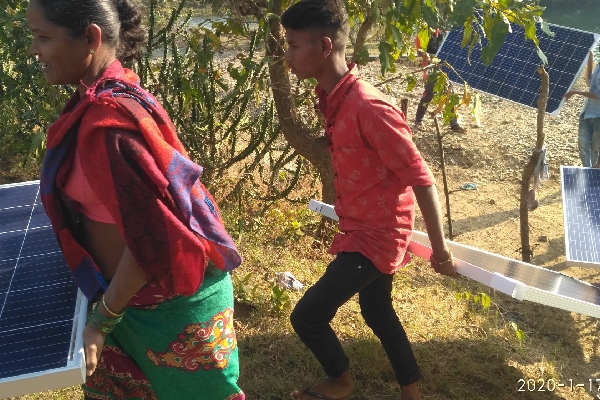
Beneficiary Contribution
Engaging with the community involves both financial and voluntary contributions, creating a sense of ownership. This involvement ensures the community’s commitment to sustaining the project, with monetary payments and labour contributions being crucial elements of this ownership.
Metering
Through intensive community interactions, a clear understanding of the community’s ability and willingness to pay metered bills is achieved. For biogas and solar microgrids, each household is metered, discouraging wastage and promoting accountability, ensuring responsible usage. Reading and payment records are meticulously kept by an individual (elected by the community) from the community.
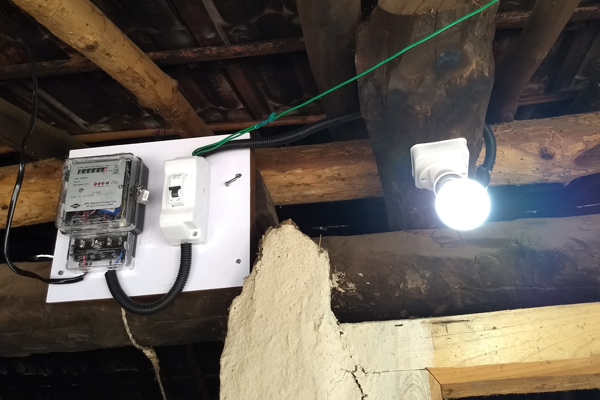
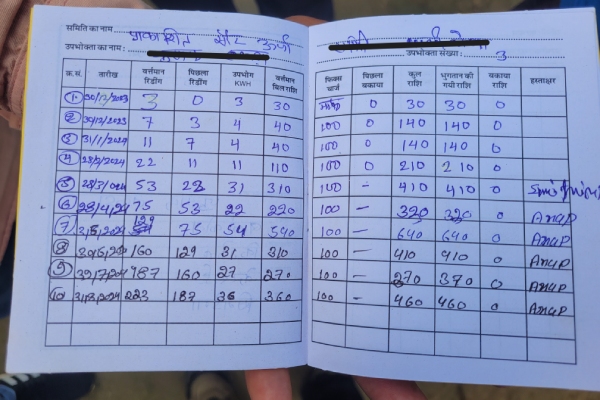
Tariff Structure
Tariff structures are designed to ensure the long-term sustainability of the system by covering operation and maintenance costs. These structures are determined based on the community’s ability to pay and are decided by the communities in conjuncture with the social organization and Gram Oorja. They promote disciplined usage and preventing overconsumption by any individual or subgroup. An initial installation charge is levied on every household to promote a sense of ownership and support system sustainability.
Ownership Transfer
The communities we work with, ultimately own these projects and ownership transfer is a key aspect that ensures the safety & sustainability of the projects as the beneficiaries have an active & involved role in maintaining the project.
The committee manages a bank account for tariff collections and system expenses, assigning a local operator for monthly collections and adapting collection methods as per village needs.
By following these steps, Gram Oorja ensures that our energy projects are sustainable, empowering communities and fostering long-term growth and development.
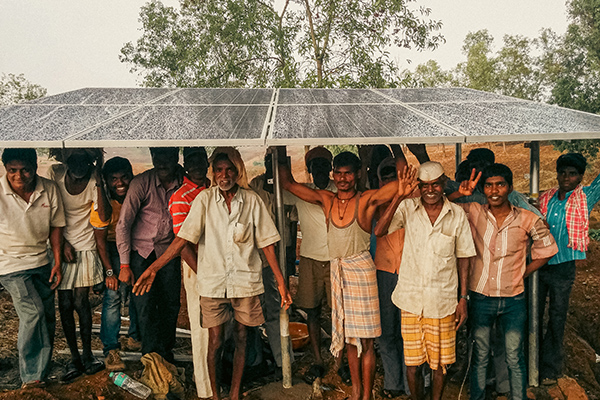
Elements of the Circle of Sustainability:
Community Interaction
Before starting any project, we engage deeply with the community to understand their socio-economic conditions and immediate energy needs. This helps us assess their readiness to adopt new technologies and establish trust. We involve the community in the installation process to foster accountability and ownership. A local village committee is formed to manage the system post-installation, ensuring smooth operation and maintenance.
Design for Aspirations
Our systems are designed with local aspirations and needs in mind, supporting long-term economic growth and livelihood generation:
- Irrigation systems are sized considering the type of crop and land availability.
- Microgrids accommodate productive loads and provide 24×7 lighting.
- Biogas grids offer a cooking experience similar to LPG.
- Domestic solar water pumps ensure water availability close to homes.
- Systems for health centres and schools match urban standards in lighting and fan quality, including power for computers and other healthcare and educational appliances.
Our designs are user-friendly, reliable, and adaptable to seasonal demands, minimizing resource wastage and maximizing adoption.
Beneficiary Contribution
Engaging with the community involves both financial and voluntary contributions, creating a sense of ownership. This involvement ensures the community’s commitment to sustaining the project, with monetary payments and labour contributions being crucial elements of this ownership.
Metering
Through intensive community interactions, a clear understanding of the community’s ability and willingness to pay metered bills is achieved. For biogas and solar microgrids, each household is metered, discouraging wastage and promoting accountability, ensuring responsible usage. Reading and payment records are meticulously kept by an individual (elected by the community) from the community.
Tariff Structure
Tariff structures are designed to ensure the long-term sustainability of the system by covering operation and maintenance costs. These structures are determined based on the community’s ability to pay and are decided by the communities in conjuncture with the social organization and Gram Oorja. They promote disciplined usage and preventing overconsumption by any individual or subgroup. An initial installation charge is levied on every household to promote a sense of ownership and support system sustainability.
Ownership Transfer
The communities we work with, ultimately own these projects and ownership transfer is a key aspect that ensures the safety & sustainability of the projects as the beneficiaries have an active & involved role in maintaining the project.
The committee manages a bank account for tariff collections and system expenses, assigning a local operator for monthly collections and adapting collection methods as per village needs.
By following these steps, Gram Oorja ensures that our energy projects are sustainable, empowering communities and fostering long-term growth and development.
